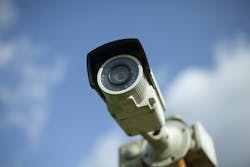Report: Video surveillance market poised for strong rebound in wake of Covid
Editor’s note: This article originally appeared on Memoori.com and has been reprinted here with permission.
The world market for video surveillance products was $19.1 billion in 2019 and accounted for 56% of the physical security products business. Over the last 12 years, it has been the largest and fastest growing of the three market sectors (video surveillance, access control and intrusion alarms).
In 2020, we estimate that demand has fallen to $18.1 billion. From 2020, it will grow at a compound annual growth rate (CAGR) of around 7% to 2025 when it will reach $25.3 billion. This growth will be driven by a number of factors including the pent-up demand after COVID-19, AI video analytics software, Video Surveillance as a Service (VSaaS), integration across the three sectors, and IoT. We are confident that this level of demand is within the capability of the video surveillance business.
However, we have shown in our new research report that achieving these targets is not a problem of technology or industry performance, but at its core is a geopolitical challenge. Will the U.S. and China settle their differences and get back to normal trade with no embargoes and trade tariffs on either side?
The world’s two current leading manufacturers of video surveillance equipment – Dahua and Hikvision – still take at least 40% of the world video camera market. But the introduction of import tariffs and bans on Chinese products for U.S. government-funded contracts has significantly reduced their sales into the U.S. They still retain their dominant position because of their stronghold on the world’s biggest market – China.
This puts them in a different league compared with even the largest Western manufacturers. This protected home market has the highest rate of growth thanks to massive investments in safe city projects. In addition, they have received government funding to plough into research and development.
On the horizon there are other Chinese companies that want a part of the massive investment in these public sector projects. Huawei, one of the world’s largest communication companies, is pushing into video surveillance and the AI startup Megvii intends to offer complete solutions. This could reduce the stronghold of Hikvision and Dahua. Once these new Chinese entrants have established themselves in the Chinese public sector they will expand abroad.
Western manufacturers have no control over this, but they have worked harder on their strengths by developing their cybersecurity expertise, which appears to be a weakness in some Chinese products. A number of western manufacturers in 2018 and 2019 showed, particularly in the enterprise market, that they can win business through developing their brand, reliability and delivering better total cost of ownership (TCO).
In the next three years, as the Building Internet of Things (BIoT) becomes a reality, IP cameras will be directly connected within these systems and that will present a myriad of opportunities for them to contribute in solving other problems not necessarily associated with security.
Integration within physical security is now a common requirement but BIoT provides two-way connectivity across all services in the building, minimizing duplication and reducing hardware and software costs. IP cameras will become a common sensor in buildings. This will, of course, change the routes to market and introduce new players into the business.
Starting in 2019, there is much evidence to show that the VSaaS sector has broken off its niche market shackles and its capability and performance value are no longer doubted. Demand has carried through 2020 and we forecast over the next five years that it will deliver significant growth.
Running in parallel, IoT is now finally breaking through and this will bring about a massive increase in the amount of data being transferred from connected devices to data centers in the cloud for image processing and storage. This has been regarded as a major problem in the case of IP video cameras because of the bandwidth required. Edge computing can alleviate this issue by performing image processing at the edge of the network closer to the source of the data. Doing so reduces the bandwidth needed between sensors, devices and the data center.
In addition, there are also operational benefits in using edge technology, which allows data to be processed faster and allows decisions to be made faster. A remaining concern is that once your video data is in the cloud, you could lose control over it and some sectors, such as the finance industry,y may be reluctant at the present time to accept this and are much more likely to go down the private cloud route.


